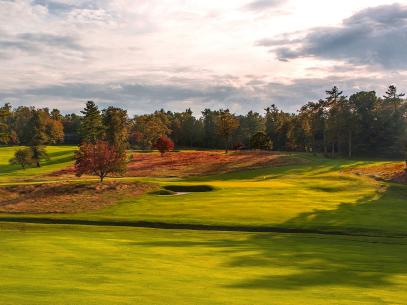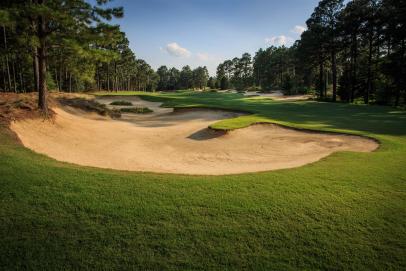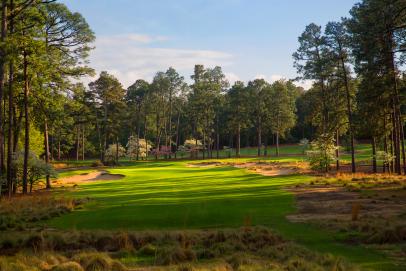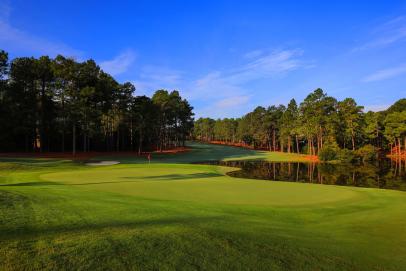Best in State
The best golf courses in North Carolina
North Carolina is one of the country's richest, deepest golf states. It's also a microcosm of our biennial America's 100 Greatest and Second 100 Greatest Courses ranking. Contemporary architect Tom Fazio has dominated those lists for more than two decades and in 2023-'24 placed 31 courses among the top 200. Though far behind, there are 13 courses by Golden Age great Donald Ross. Both designers dominate the North Carolina ranking as well, each having primary offices here with Fazio working parts of the year out of Hendesonville and Ross taking up residence in Pinehurst for over four decades. Fazio still gets the better with a total of 13 courses among North Carolina's fist 40 as well as five of the top seven, but Ross closes the gap with 10 Best in State designs of his own, including the top spot, Pinehurst No. 2.
Below you'll find our 2023-'24 ranking of the Best Golf Courses in North Carolina.
We urge you to click through to each individual course page for bonus photography, drone footage and reviews from our course panelists. Plus, you can now leave your own ratings on the courses you’ve played … to make your case why your favorite should be ranked higher.
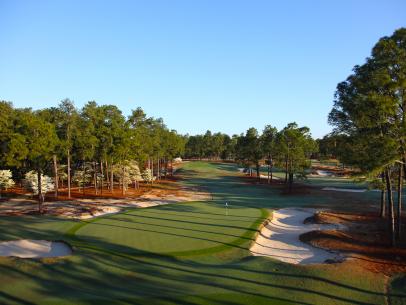
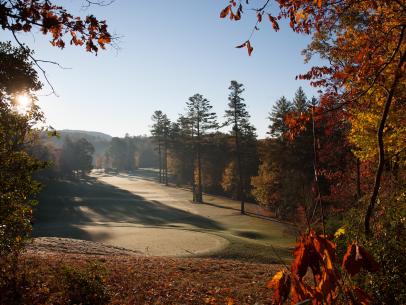

Created by architect Perry Maxwell on the heels of his work at Prairie Dunes and Southern Hills, Old Town Club was surprisingly unique, and included perhaps Maxwell’s only surviving double green. When Bill Coore and Ben Crenshaw were hired to address the bunkering at Old Town, they opted not to reproduce the original bunkers (some of which were enormous) but rather emulate their gnarly shapes, edges and vegetation in places where bunkers naturally fit. Lots of trees had already been removed, but the architects convinced the club to get rid of even more. Now, a single swath of fairway connects the seventh, eighth, ninth, 17th and 18th holes. Very unique. The course has jumped 45 places in the rankings since it debuted in 2019.


Unlike nearby Wade Hampton G.C., a Tom Fazio design that was routed through natural valleys to forego the need for dynamite, Mountaintop was blasted from solid rock. Some holes were forged through slopes of the Blue Ridge Mountains, like the par-4 sixth, edged by a 30-foot-high wall of granite on the right. Conservative estimates are that all that rock removal raised the cost of construction of this continuous-18 layout to $1 million per hole. The opening tee shot drops 100 feet, and six holes also play over a deep gorge formed by Hurricane Creek. Mountaintop proves there is no property too rugged for Tom Fazio.
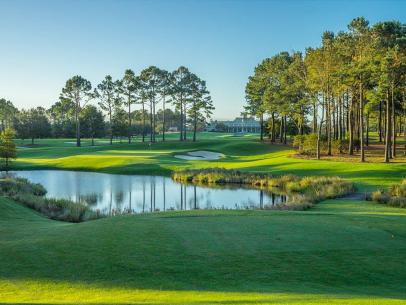
From Golf Digest Architecture Editor emeritus Ron Whitten:
I played Eagle Point Golf Club, a Tom Fazio design, soon after it became ranked on Golf Digest's 100 Greatest but before it hosted the 2017 Wells Fargo Championship as a one-time substitute for Quail Hollow Club, which hosted the PGA Championship that summer. I walked it with caddies, Director of Golf Billy Anderson and one of the club's founders (and later president) Bobby Long (who was also green chairman at Seminole and a member of Augusta National.) Just before we teed off, golf architect Andrew Green came over and introduced himself. We'd never met. He was designing a short-game facility for the club. Though it may seem strange that Fazio's firm wasn’t retained to do that, it helps to know that Andrew’s brother, Sam, was Eagle Point’s course superintendent at the time. Eagle Point is a beautifully rolling, pine-lined Augusta National clone with huge immaculate greens (bentgrass back then, Champion G12 Bermudagrass now) and gorgeously shaped bunkers which, like at many Tom Fazio designs, seemed to have fully interchangeable parts. I didn’t dislike the look, but I didn’t go head over heels over it, either. Mainly because I’ve seen it all before. The ninth had a wind-blown Wild Dunes vibe to it, the 10th had the long-range view of a Galloway National hole, and the par-5 18th seemed patterned after the seventh at Quail Hollow. When we got to the 13th hole, I remarked to Bobby Long that I liked how Fazio’s people had dug this huge irrigation lake, piled up all the soil into a massive hillside and planted mature pines all over it to make it look like it’s been there forever. “Oh, no, you’re wrong,” Long said. “That hill has been there forever.” Billy then corrected him. “Mr. Long, this was a pasture. They did create that.” Long was surprised, then asked me how I could possibly know that when I’d never been on the property before. (I was tempted to ask him how he, as a club founder, had never found his way back to that corner of the property during construction, but I resisted.) Walking up the last hole, Long asked me if I’d played Fazio's Alotian in Little Rock, and I remarked that I had with Warren Stephens, who was nice enough to then sponsor me at Augusta National. “You’re a member at Augusta National?” Long gasped. (I wish I could recreate in print the tone of astonishment in his voice.) No, no, no, I said. He sponsored me for a weekend of golf there back in 2005. “Oh,” Long said, as he looked at my Dockers khakis and mis-matched socks. Clearly, he was temporarily stricken by the fear that Augusta National had suddenly and drastically lowered its membership qualifications.
.jpg.rend.hgtvcom.406.271.suffix/1573162575006.jpeg)




